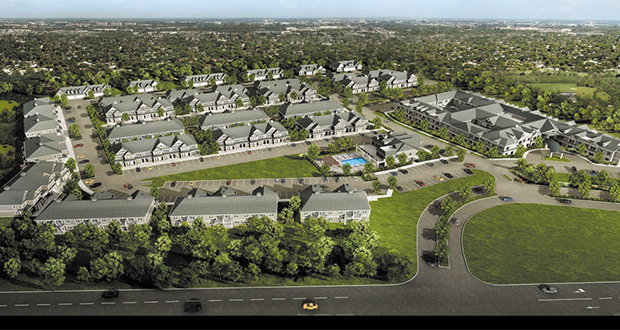Developers in the active adult space believe that the coronavirus pandemic is proving out their market selection and development strategies, as well as accelerating previous senior living trends that will bode well for future demand.
Notably, migration patterns in recent years are seeing greater demand for active adult in secondary and suburban markets across the South, where developers benefit from an expedited entitlement process. Capitol Seniors Housing (CSH) Principal Michael Hartman called the secondary, suburban, Southern strategy “the Three S’s” during a panel at Senior Housing News’ Active Adult Virtual Summit.
There Is also a fourth “s” to consider, according to Engel Burman founding partner and Principal Steven Krieger: many prospective residents prefer to stay in their markets where they have lived for decades, to be close to friends and family, as well as the lifestyles to which they are accustomed.
“They’re making a lifestyle change, but they want to stay close to their family members and they want to stay in those communities that they know,” he said.
Local development strategy
Building in markets with favorable demographic growth is one of the maxims of real estate development, and active adult developers are following seniors to the markets where they are moving.
In the past, that used to be in major metropolitan areas, but current migratory patterns show seniors moving south and west — areas of the country far removed from dense urban markets in the north, Hartman said.
As an example, Hartman cited the Census Bureau’s top 15 markets for population growth over the past five years. The only major metros on that list are Atlanta, Dallas and Seattle. The rest are secondary markets that are capable of supporting professional sports franchises because of population growth, but are undersupplied for senior housing. Examples include Charlotte, North Carolina; Nashville; and Austin, Texas.
Additionally, the pandemic is expediting social and professional changes in secondary markets. In particular, companies are allowing employees to work from home and finding that they can expand their talent pool remotely.
“This economic disruption may cause companies that otherwise demand people to live in their hometown to say, ‘You know what? A distributed workforce is okay with us,” he said.
Secondary markets can also trend suburban, which dovetails with Engel Burman’s development strategy around Long Island, New York. The firm built its first age-restricted community in 1997 in East Meadow, New York, and specializes in co-locating its active adult projects next to its Bristal Assisted Living facilities, effectively creating a “look-alike CCRC” model without the need for licensing or pre-sales.
Residents of Engel Burman’s developments come from within the communities, where they lived most of their lives. The sense of familiarity makes the lifestyle change to active adult easier. The firm’s footprint also leads to new move-ins from 30 to 40 miles away, due to a lack of competing product, Krieger said.
“What we’re seeing is that people want to be closer to their grandkids, they want to be close to their doctors. They want to continue going to the restaurants that they go to. They want to stay in the communities that they’ve built over their lifetimes,” he said.
CSH measures interest in its active adult communities by drive times. For example, a 15-minute drive in a secondary southern market may be equivalent to being five miles away from a facility in a densely populated market.
“When you drop down a purpose-built, 55-plus community in the South, people want to be about 15 minutes away. At least two-thirds of the people moving into a community are from that town or from the next town over,” Hartman said.
Patient design timetables
Secondary markets also have advantages in lower land and construction costs, and reduced costs of living, and local governments that are encouraging of new development.
CSH and Engel Burman also enlist the expertise of local contractors, architecture and design firms when building new active adult communities, to expedite the entitlement process. Once preferred partners are in place, it becomes simple to design communities that can be replicated in multiple markets, given active adult’s synergies with traditional multifamily properties.
“Our active adult prototype architect is the same architect that could [build] in any city. We would use that same architect pretty much across the board,” Hartman said.
A major part of the entitlement process is understanding the existing zoning on the land. Last year, Engel Burman broke ground on a $125 million project in Mt. Sinai, New York, consisting of a 225-unit 55-plus community, along with a 120-unit Bristal Assisted Living facility.
The firm acquired the 24-acre site from Port Washington, New York-based Amsterdam House, which planned building a continuing care retirement community. The zoning allowed for up to 225 apartments and an assisted living community. With that knowledge, Engel Burman and its partner in the development, Chicago-based health care real estate investor Harrison Street Real Estate Capital, moved rapidly to secure the site.
Over time, Engel Burman’s experience in building senior housing has lent to helping shape the entitlement process on Long Island. The firm had a hand in drafting building codes for assisted living in five villages in the area, does its due diligence on any land opportunity that comes its way and will not hesitate to scrap a deal if it cannot get rezoning approved.
“We will walk away from a parcel during due diligence, if we think there’s no chance of getting it done. We’ve done that many times,” Krieger said.


